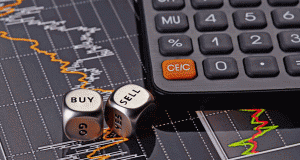Has The Market Peaked? Time To Cash Out?
 The resiliency of this five-plus year old bull market cannot be denied. After corrections in February and April sent shivers down investors’ spines, the major market averages have resumed their winning ways, climbing to new all-time highs last week.
The resiliency of this five-plus year old bull market cannot be denied. After corrections in February and April sent shivers down investors’ spines, the major market averages have resumed their winning ways, climbing to new all-time highs last week.
The 118-year old Dow Jones Industrials Average closed above the 17,000 mark for the first time in its long, storied history last Thursday. And the S&P 500 drew ever closer to the psychologically important 2,000 level with an historic close at 1,985.
Thanks to these sharp recoveries both indices have nearly tripled in value off the March 2009 lows.
But the celebration over these historic highs didn’t last very long.
Both the Dow and the S&P 500 have pulled back from their peaks in trading this week. And the hand-wringing over what second quarter earnings will reveal about the economy has begun in earnest.
The question on many investors’ minds right now is whether these new record highs signal the peak of this bull market or are just the latest milestones in a rise that has yet to reach its zenith?
As luck would have it, several market gurus have weighed in on this question in recent days. But it should come as no surprise that their opinions on the market’s near-term future differ greatly.
The most bullish forecast comes from Gerard Baker, the Wall Street Journal’s Editor-in-Chief. When asked by Yahoo! Finance if the Dow will hit 20,000, he responded with this little nugget…
“Will the Dow hit 20,000? I’d say that’s probably pretty likely.”
Now, Mr. Baker declined to say when he thought this historic event would actually occur. But it certainly sounds like he thinks it’s going to happen sooner rather than later.
At the opposite end of the spectrum, we have an extremely bearish forecast from perennial “gloom and doomer”, Marc Faber. In an interview with Alex Rosenberg of CNBC, Mr. Faber said he expects a 30% drop in the S&P 500.
No question about it, a 30% decline in the S&P 500 would be a “grizzly” type bear market. And it would certainly cause devastation to investors’ portfolios on a scale we haven’t seen since the 2008 financial crisis.
Mr. Faber gave the following explanation for his negative outlook…
“I don’t believe that the global economy is strengthening; I rather think the global economy is weakening. There are other issues that may put the weight on the markets that will push prices lower. A, I think that we have in the White House, a very poor president, and that may lead to some political issues in the U.S. domestically. B, we have numerous political issues to consider. And C, we could have, potentially, a much higher oil price.”
A more middle of the road prediction, and one that I think makes the most sense, is provided by CNBC’s Ron Insana.
Mr. Insana doesn’t believe we have entered a bear market. He says that he has been and remains “a firm believer that we are in the midst of a secular bull market driven by the following factors: a friendly Fed, a new energy revolution, a manufacturing renaissance in the U.S., technological innovation, and a real estate recovery.”
While Insana acknowledges “that a correction could be coming”, he assures readers that he “will use the opportunity to add to selected positions – ‘average down’ as they say on Wall Street.” Mr. Insana wouldn’t be surprised if the current pullback plays out much like the declines in February and April… “short, sharp and scary.”
I tend to agree with Insana, and for that reason, I have no plans to cash out my portfolio anytime soon.
However, I will look to lock in gains on my riskier and more volatile positions. It’s never a bad thing to have a little cash on hand in case a correction does occur. A little dry powder to take advantage of any bargains that may materialize during a correction goes a long way.
Profitably Yours,
Robert Morris
Category: Breaking News




